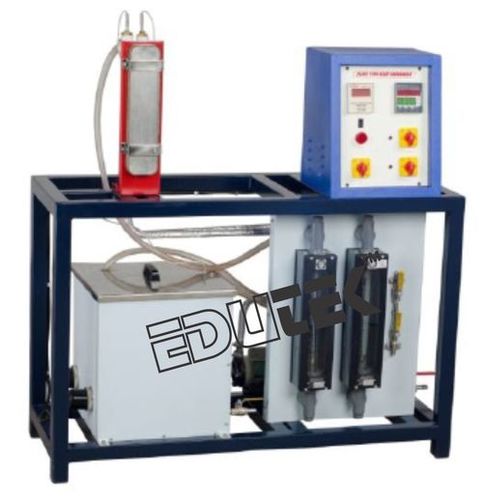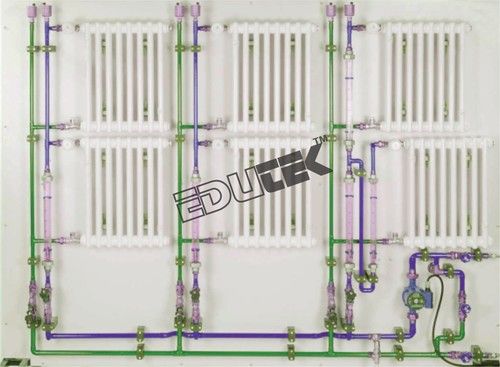Heat Exchangers In The Refrigeration Circuit
Product Details:
X
Product Description
HEAT EXCHANGERS IN THE REFRIGERATION CIRCUIT
Heat exchangers are an elementary part of refrigeration systems. During cooling they are used to absorb the energy of the refrigerant by evaporation. During heating they discharge the energy set free during the condensation of the refrigerant. They are also used for internal energy transfer during superheating or supercooling of the refrigerant.
Dependent on the media, a difference is made between air / refrigerant, water / refrigerant and refrigerant / refrigerant heat exchangers. Dependent on the constructive design, a difference is also made between coaxial, finned tube, plate or shell & tube heat exchangers.
The refrigeration circuit of the trainer includes as evaporator an air cooling finned tube heat exchanger and a water-heated plate heat exchanger, as superheater a tubular heat exchanger, and as condenser a water-cooled coaxial coil heat exchanger. These heat exchangers are the ones used most commonly in refrigeration and fulfil different functions dependent on the system type. A finned tube heat exchanger can e.g. also be used as a condenser.
The components are arranged clearly at the front. By measuring the mass flow rates and the inlet and outlet temperatures the transferred energy fluxes can be determined.
The well-structured instructional material sets out the fundamentals and provides a step-by-step guide through the experimentsThe unit shall perform the following experiments and investigations:
Learning Objectives / Experiments
- different heat exchangers and their use in refrigeration
- coaxial coil heat exchanger
- finned tube heat exchanger
- tubular heat exchanger
- plate heat exchanger
- find out the correct installation position
- determine energy fluxes
- effect of superheating and supercooling of the
- refrigerant on the cyclic process
- design of a compression refrigeration system
- representation of the cyclic process in the
- log p-h diagram
Specification
- Refrigeration system with 4 different heat exchangers: coaxial coil heat exchanger, finned tube heat exchanger, tubular heat exchanger, plate heat exchanger
- Combinations of different media: water / refrigerant, refrigerant / refrigerant, air / refrigerant
- Water circuit with tank and pump to cool the condenser and heat the evaporator
- Super heater can be disabled via bypass
- Flow meter and thermometer in the water circuit to determine the exchanged energy fluxes
- Thermometers at all relevant points of the system
- refrigerant R134a, CFC-free
Technical Data
- Compressor
- Refrigeration capacity: 625W at -5/32°C
- Power consumption: 358W at -10/32°C
- Receiver: 1,3L
Measuring ranges
- Pressure: -1...9bar / -1...24bar
- Temperature: 12x -5...105°C, 1x 0...60°C
- Flow rate: 1x 2...27L/h (R134a), 2x 20...250L/h
Dimensions and Weight
- LxWxH: 1900x800x1900mm
- Weight: approx. 255kg
Tell us about your requirement

Price:
Quantity
Select Unit
- 50
- 100
- 200
- 250
- 500
- 1000+
Additional detail
+91
Email
Other Products in 'Fluid Mechanics Lab Equipment' category
"We deal all over World but our main domestic market is South India"
 |
EDUTEK INSTRUMENTATION
All Rights Reserved.(Terms of Use) Developed and Managed by Infocom Network Private Limited. |














